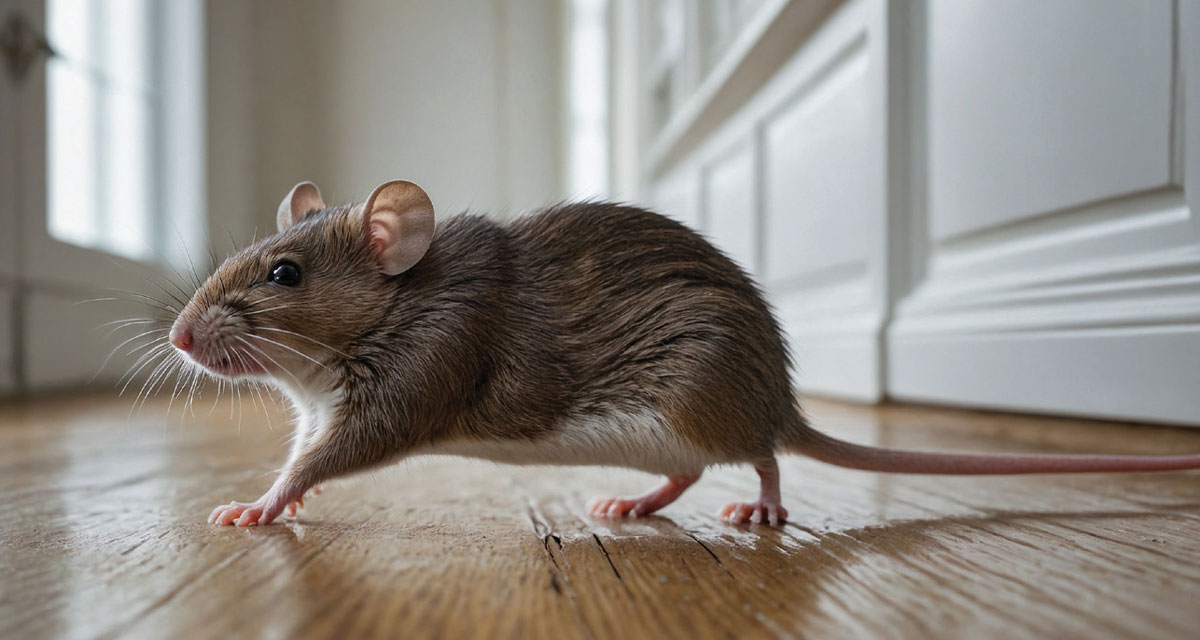Fear moves in me like the rush of a huge river – I’ve just witnessed a little brown mouse in my house, nonchalantly camped out upon my gleaming white, recently cleaned stove. In that instant, we make eye contact, and I can tell that he is equally shocked and even more mortified when I start screaming and banging on the kitchen wall to further scare the daylights out of him. He hurriedly disappears down the well of one of the burners on the stove, and I run helter-skelter out of the house, cell phone in hand frantically calling the pest management company which confidently advertises its services daily on the television. Minutes later, a company serviceman arrives, does a quick inspection of the premises and lays out his fancy wares around my home to catch the terrifying offenders. Later that evening, when I have recouped most of my composure, I start thinking about mice and, for several hours, read about them on the internet, which allays some of my fears but greatly inflames others.
I learned that the best reason of all to fear rodents is disease. According to the U.S. Centers for Disease Control and Prevention, rodents carry more than a dozen common diseases such as hantavirus leptospirosis, plague, lymphocytic chorio-meningitis and Lassa fever. I remember from a college medieval history course that, in the 14th century, a bacteria carried on the backs of rodents by fleas devastated and killed a third of Europe’s population. This event was called the Black Death or Bubonic Plague. Although they are often found in dark and dirty areas like sewers, they are equally happy in non-filthy environments, attracted to cluttered and disorganized spaces where they have plenty of room to hide and nest. A common annoyance for homeowners, mice are adept at sneaking into houses and establishing significant colonies before people are even aware there is a problem.
There is even a name for the trepidation that affects so many of us. Musophobia is the intense fear of mice, rats and other rodents. Common symptoms of musophobia include screaming, trying to flee, accelerated heart rate, panic attacks, gastrointestinal distress, shaking/trembling and overwhelming anxiety. Scientists postulate that musophobia is more common in females than males and that nine percent of people are “very afraid” of mice. The writer, Ambrose Bierce, humorously averred that a mouse was “an animal which strews its path with fainting women.” Animal behaviorists have even noted that the fear of rats and mice may have evolutionary origins since, historically, rodents spread diseases, consumed vital food supplies and ruined clothing and other fabrics, all of which were essential to our ancestors’ survival. Mice may look small and vulnerable, but besides being a vector for transmitting disease, they are really good at destroying property. They will literally chew on anything – wood, paper, cloth, books, furniture, insulation and most dangerous of all, electrical wiring (which can cause a fire). The damage that they can do to your home and the cost of repairing it is enough to cause consternation in any homeowner’s heart.
Being very small, mice can enter your home through the tiniest cracks and gaps around windows, doors, vents and pipes. The pest management experts agree that the best way to get them out is to keep them out in the first place. Following are tips that one pest management site provided:
- Seal entry points or openings in your home with caulk, weather-stripping or steel wool.
- Declutter storage areas like basements and attics, and keep items stored in sturdy, sealed containers. Minimize possible hiding spots which can make it much harder for mice to establish a presence.
- Keep the house tidy and clean. Make sure food is stored in airtight containers, and promptly clean up crumbs and spills. Take out the trash regularly.
- Try using natural repellants like peppermint or clove oil and/or ultrasonic repellent devices which emit high-frequency sound waves that are inaudible to humans but irritating to mice.
- Some people resort to using mouse traps, but as a card-carrying member of PETA, I cannot bring myself to kill or maim other creatures. And, I have to agree with Charles Darwin’s statement that, “building a better mousetrap merely results in smarter mice.” If there is a more serious infestation (one female mouse can produce up to 10 litters per year), call the professionals right away.
Walt Disney famously said, “I only hope that we don’t lose sight of one thing – that it (Disneyland) was all started by a mouse.” I understand their culture better now, but I am still afraid – and grateful that my trusty pest management service comes monthly (in the words of Shakespeare) “to take arms against a sea of [rodent] troubles and, by opposing, end them.”



















